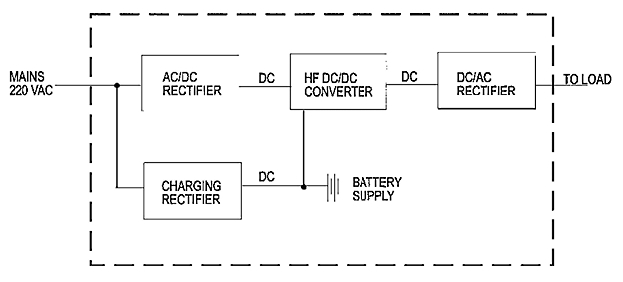Marine communication systems rely heavily on power batteries to operate radios, emergency equipment, and other vital systems. Various battery types exist, each with unique pros and cons. This article explores these types, including stationary lead-acid, Ni-Fe, and Ni-Cd batteries, and details their charging, maintenance, control, and capacity requirements.
We’ll also cover UPS systems and battery selection criteria to help you choose the best battery for your marine communication needs. Ultimately, selecting the right battery is crucial for ensuring reliable communication and safety at sea. This guide provides essential information for making informed decisions about marine battery systems.
Radio batteries
Batteries for use in radio installations on board ships must be of sufficient quality to sustain environmental stress such as vibrations and temperature changes. The batteries must also sustain charging and discharging, as well as continuous voltage charging.
Lead batteries
The most common accumulators are lead batteries. They consist, in principle, of two specially prepared plates of lead placed in a vessel containing thinned sulphuric acid.
This vessel is called a battery cell, and the two plates of lead constitute a positive and a negative pole. When the accumulator is charged, the voltage over the poles is about 2 volts.
Lead battery charges are measured by means of an acid meter. In fully charged condition, the specific gravity is normally 1,26 – 1,28 at a temperature of 20 degrees Celsius. However, the specific gravity varies according to changes in temperature.
- Spec. gravity 1,28 at 20 °C corresponds to 1,269 at 35 °C.
- Spec. gravity 1,28 at 20 °C corresponds to 1,294 at 0 °C.
- Spec. gravity 1,28 at 20 °C corresponds to 1,301 at -10 °C.
The following table shows the relationship between specific gravity and capacity (Ah), calculated as a percentage:
| Condition | Spec. gravity | Capacity, % |
| Fully charged | 1,28 | 100 % |
| Nearly fully charged | 1,25 | 75 % |
| Half charged | 1,225 | 50 % |
| Nearly discharged | 1,19 | 25 % |
Charging and Maintenance
To ensure that the batteries are fully charged, they must be checked regularly by means of an acid meter and voltmeter. When the battery is not in use, cell voltage is between 2,05-2,12 volt. When the voltage reaches a level of about 2,40 volt, the cells start producing gas vigorously. This gas is very explosive, and all use of open fire is hazardous. All battery rooms must therefore be properly ventilated.
Read also: Safety Equipment for Safeguarding Life at Sea
The surface of the battery must be cleaned regularly to prevent current leakage between the cells. The poles must also be protected with nonacid vaseline to ensure good contact. The battery cells must be refilled regularly with distilled water. Lead batteries require a minimum charging current in accordance with the following formula:
- Ah = ampere hours.
A 200 Ah battery requires a charging current of at least 10 amperes. Over-charging as well as under-charging is harmful to lead batteries as it causes increased deposits and sulphating, thus reducing the battery’s capacity and lifetime.
Marine lead batteries have an approximate lifetime of 4 years, depending on maintenance and quality.
Lead batteries and Ni-Cd (Nickel Cadmium) batteries must not be kept in the same room as the acid/air gases may mutually neutralize the active element of the individual battery, thus reducing the capacity and lifetime of the batteries.
Battery capacity
Batteries of different sizes have different capacities. Large batteries have larger capacity than smaller batteries. The capacity is indicated by the numbers of Ampere hours (Ah).
Example:
If we have a battery with a total capacity of 200 Ah, and the radio station consumes 20 amperes (A), this means that the station can run for 10 hours.
Batteries coupled in series will increase their total voltage, but their capacity will remain the same.
Example:
When two 12 volt batteries with an individual capacity of 100 Ah are coupled in series, the result will be a battery with a total voltage of 24 volts, and a total capacity of 100 Ah.
Parallel coupled batteries will keep voltage at the same level, but capacity will increase.
Example:
When two 12 volt batteries with an individual capacity of 100 Ah are coupled in parallel, the result will be a total voltage of 12 volt, and a total capacity of 200 Ah.
Stationary lead batteries
Larger battery banks are often built up with stationary lead batteries. The total capacity may be as much as 2 000 – 3 000 Ah. Charging and maintenance must be carried out according to the manufacturer’s specifications. Approximate lifetime is 8-10 years. The specific gravity of stationary lead batteries when fully charged is 1,24.
Ni-Fe batteries
Ni-Fe (Nickel-Iron) batteries have positive plates of nickel and negative plates of iron. The electrolyte consists of thinned calcium lye. The voltage per cell is approx. 1,4 volts, and the average voltage during discharge is 1,2 volts.
The voltage drops quite evenly during discharge, and the charge can be measured with a voltmeter. The specific gravity of the lye remains almost unchanged. When charged, the voltage per cell increases from 1,4 volt to approx. 1,8 volt.
Ni-Cd batteries
The Ni-Cd (Nickel-Cadmium) accumulator is another type of lye accumulator, in which the negative plate is made of cadmium salt instead of iron. This type of battery is also used as a power supply for Ship’s Antennas Systems and Radio Wave Propagationship radio stations. The charging conditions can not be determined by means of an acid meter, because the density of the lye is normally 1,17-1,19 both in charged and discharged condition. However, the charge can be checked by measuring its voltage with a voltmeter.
Charging
A fully charged Ni-Cd battery relies on the charging current conforming to the capacity of the battery, and that the charger can supply at least 32 volts for a 24 volt installation (20 cells), and 64 volts for a 48 volt installation (40 cells).
It will be interesting: Terrestrial Urgency and Safety Communications on the Vessels
As a general rule, the charging current must be at least 0,05 × capacity in Ah (ampere hours). Ni-Cd batteries are normally not damaged by overcharging or undercharging.
Battery control
In order to be able to decide whether or not a Ni-Cd battery needs charging, the voltage between the cells must be measured. The time spent before the battery voltage reaches 1,6 – 1,7 volts per cell clearly indicates the charging condition of the battery.
Normally a fully charged Ni-Cd battery has a cell voltage of 1,6 – 1,7 volts. In the course of 10 – 15 minutes, a clear “whistling sound” should be heard, indicating that gassing is taking place. If this does not occur, the charging should continue. When the charging is turned off, the cell voltage will decrease to 1,36 volts after an hour or two.
When the battery is coupled or in use, the voltage drops to 1,2 volts per cell. The voltage remains constant until 80 % of the battery capacity has been used. In order to accurately check a Ni-Cd battery, it is necessary to use a reliable voltmeter with a measuring range of 2,5 volts at full deflection.
When properly maintained, Ni-Cd batteries have an approx, life span of 15 years.
UPS (Uninterrupted Power Supply)
UPS may be used as a reserve energy source for single items of equipment or for entire installations, provided that the capacity requirements are met. Otherwise, the same requirements as for The Structure, Functions and Details of Professional Marine Radio Communicationordinary radio batteries apply to charging, maintenance and the inspection of charging condition.

The Concept of the “ON-LINE” UPS
The DC/AC invertor is the main source of power. It runs continuously, and independently of the mains. In this unit, the mains voltage (220 VAC) is rectified (24 VDC) by the AC/DC rectifier. The built in battery is also kept fully charged at the same time. In the event of a power cut, the battery bank will supply power to the DC/AC invertor, and thus protect the load from power loss. A correctly designed ON-LINE UPS protects connected equipment from loss of net power, transient voltages, generator noise and net frequency variation.
Capacity requirements
The following requirements apply to the operation time of reserve sources of energy.
- On ships with an emergency energy source that meets capacity requirements: 1 hour.
- On ships without an emergency energy source, or with an emergency energy source which does not meet the capacity requirements: 6 hours.
Capacity requirements are calculated on the basis of the radio equipment’s average consumption, i. e. the sum total of use in transmitting-mode and stand-by mode, divided by 2. Emergency lights, independent receivers and other loads are added to this sum.

As a general rule, the capacity of ordinary lead batteries is given for a discharging time of 20 hours.
- The capacity at 6 hours discharge time is approx. 80 % of the capacity at 20 hours discharge time.
- The capacity at 1 hour discharge time is approx. 50 % of the capacity at 20 hours discharge time.


